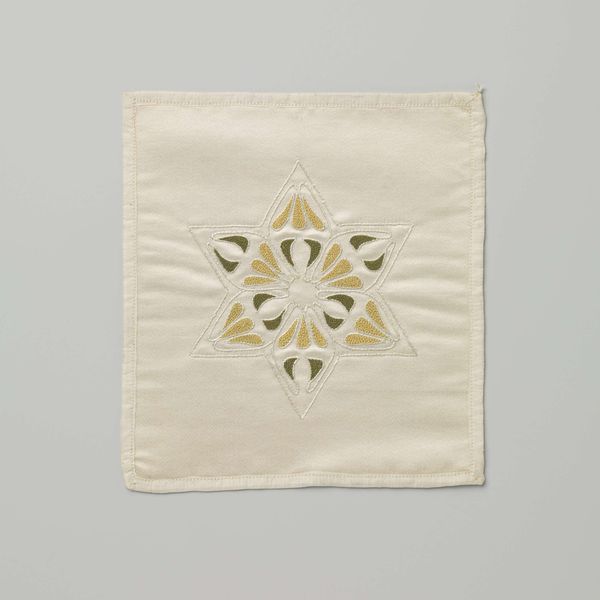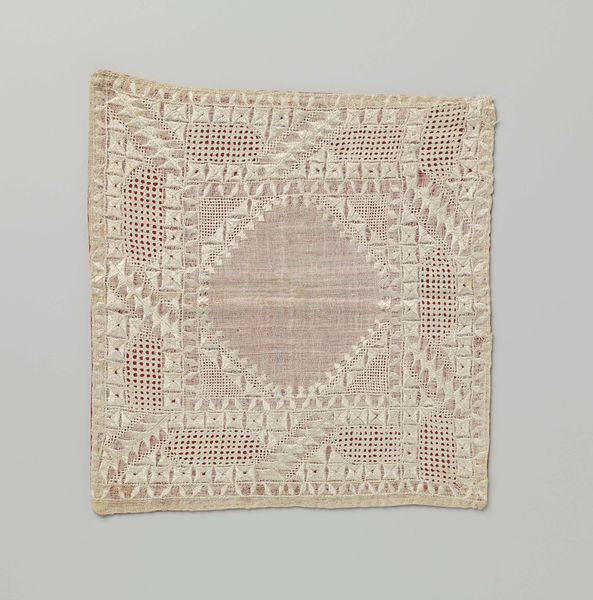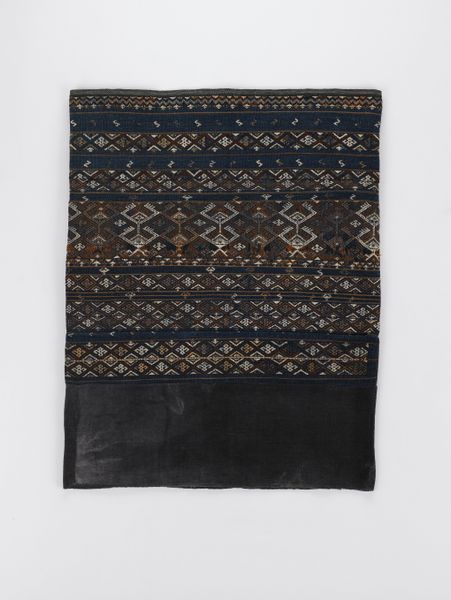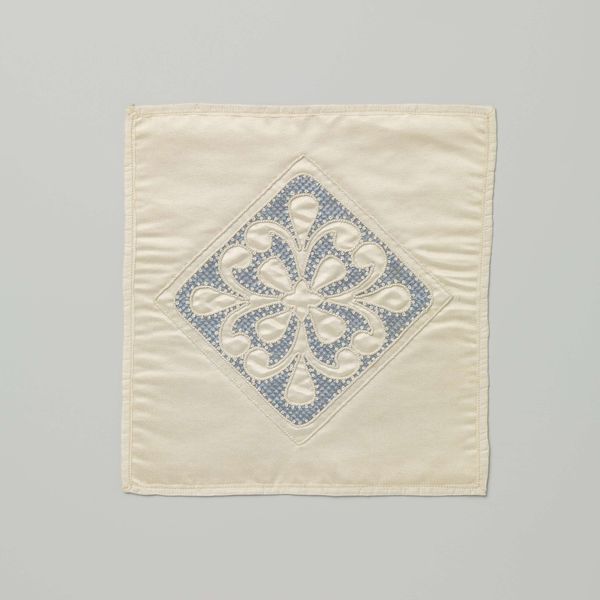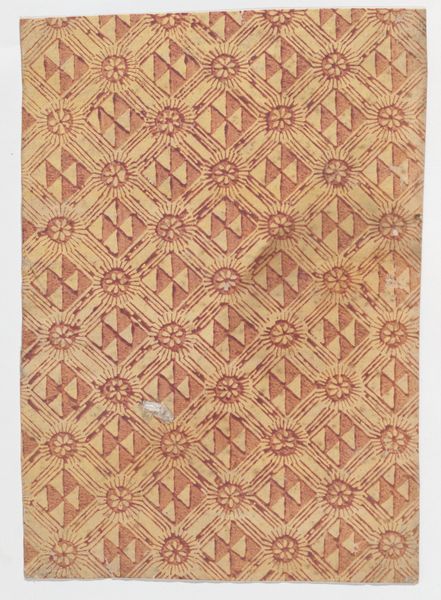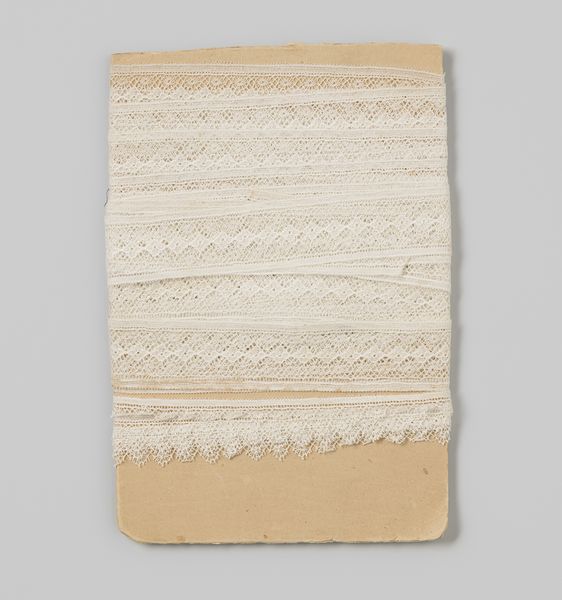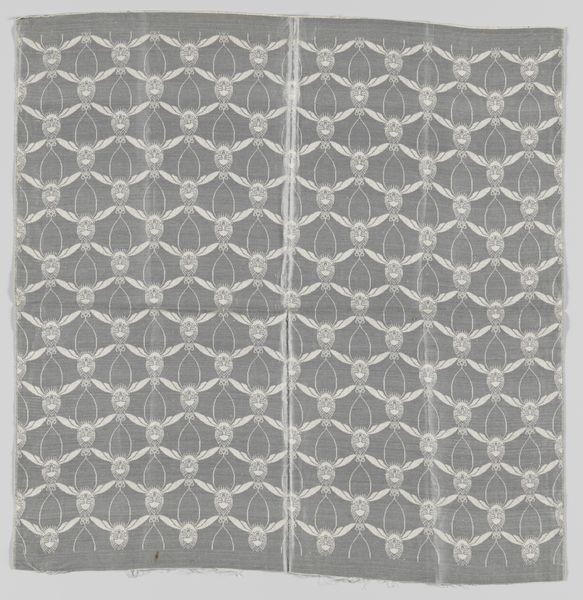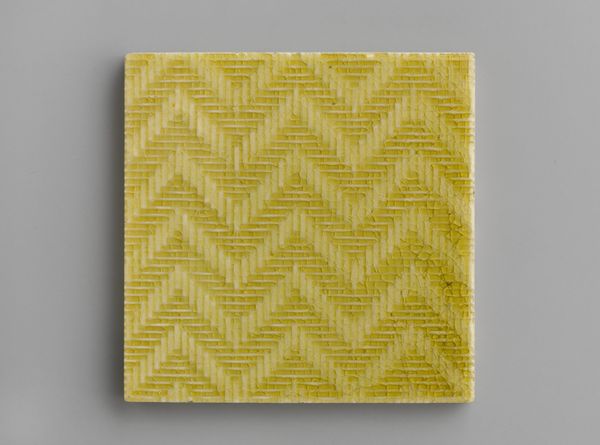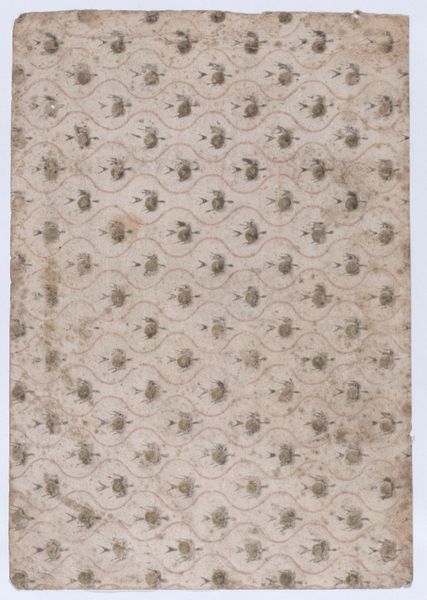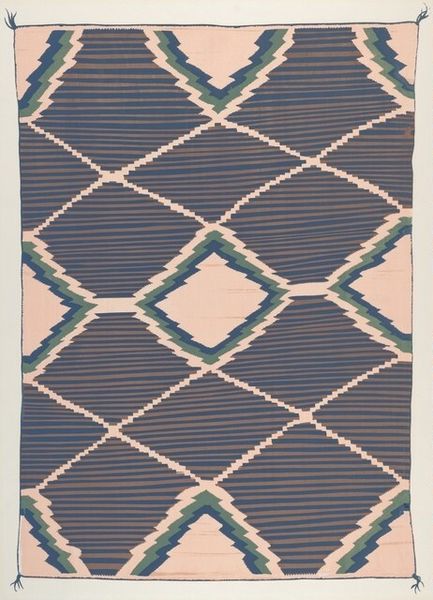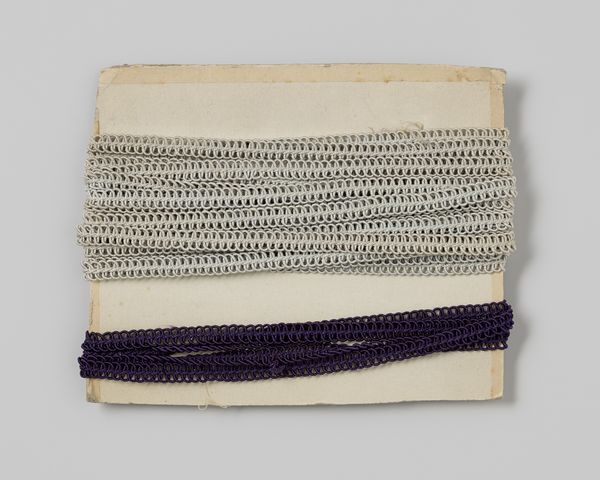
print, paper
#
print print-like
#
homemade paper
#
paper non-digital material
# print
#
book design
#
pattern
#
paper texture
#
paper
#
printed format
#
book mockup
#
geometric
#
binding and layout
#
publication mockup
#
printing proof
Dimensions: 11.3 cm, 11.5 cm
Copyright: Rijks Museum: Open Domain
Editor: Here we have "Handwerk met doorstopvullingen," a print on paper created around 1900 by Aagje Tiket. There's something so delicate and precise about this piece, even with the subtle variations in each geometric shape. It’s like a beautifully patterned vintage textile. What's your take on it? Curator: Oh, I love that "vintage textile" connection! For me, this piece whispers of quiet dedication. It’s from an era obsessed with craft and detail. I imagine Tiket meticulously crafting each little design, each tiny triangle, maybe as a sort of meditative practice? It’s about more than just pattern; it's about the *process* of creation itself. What feelings arise when you focus on any singular shape within the bigger geometric structure? Editor: That's interesting, I didn’t really focus on one triangle. When I look at it individually, it's imperfect, with all the inconsistencies from it being printed and such. However, they do have variety and, in a way, give each its own character, personality and life. I also like that the patterns remind me of old Dutch samplers from around that period. Curator: Ah, absolutely. Samplers, like this print, often embodied both skill and creativity, don't you think? Each a small world containing larger feelings... But I am wondering: does its status as "print art" instead of textile, give it an extra-level of freedom? Editor: Yes! Because it allows you to go even more micro and make small and tight geometries that may not have been practical otherwise. Curator: See, and to me, *that* is the exciting dialogue between constraint and exploration within these small spaces. Editor: This has opened my eyes to how it may be pushing the boundaries. Curator: Mine too! Thank you! It’s about looking closer, isn't it? That single shift changes it all.
Comments
No comments
Be the first to comment and join the conversation on the ultimate creative platform.
